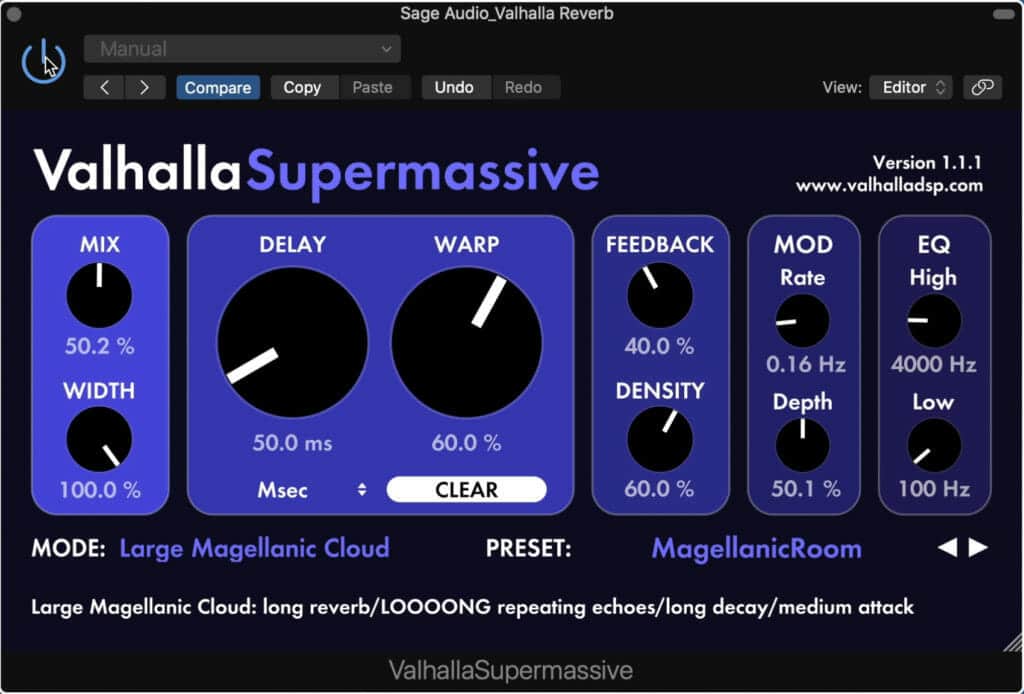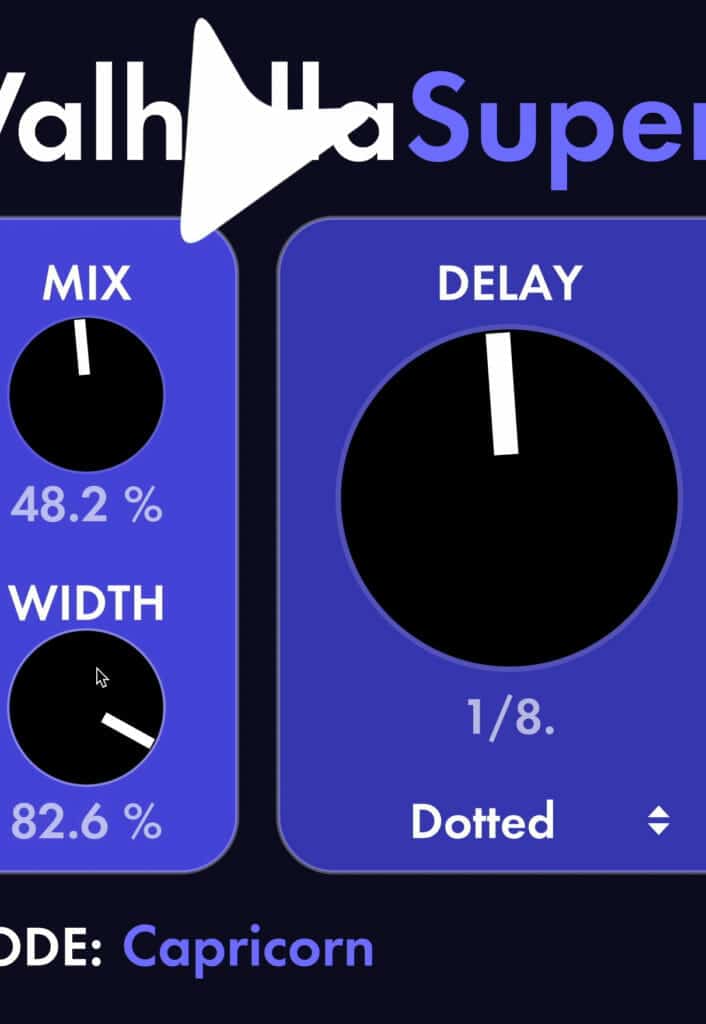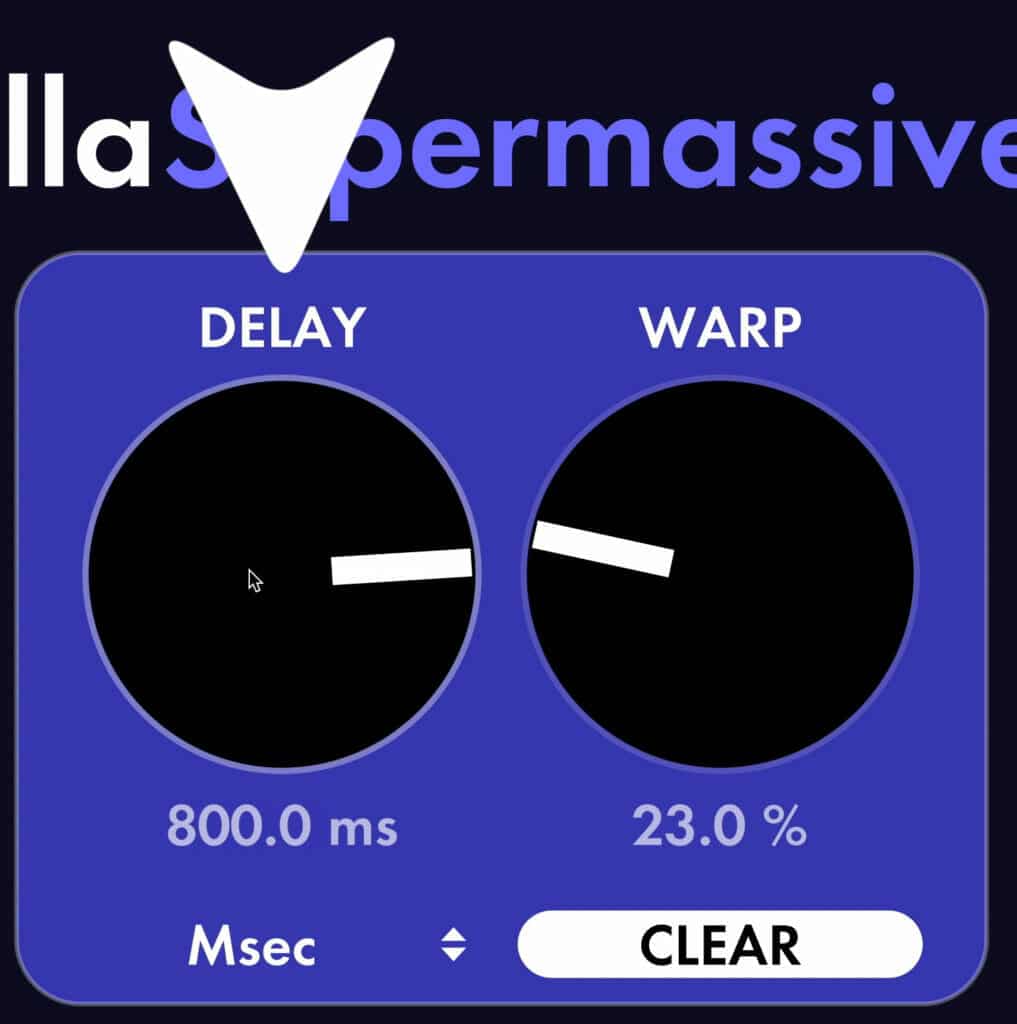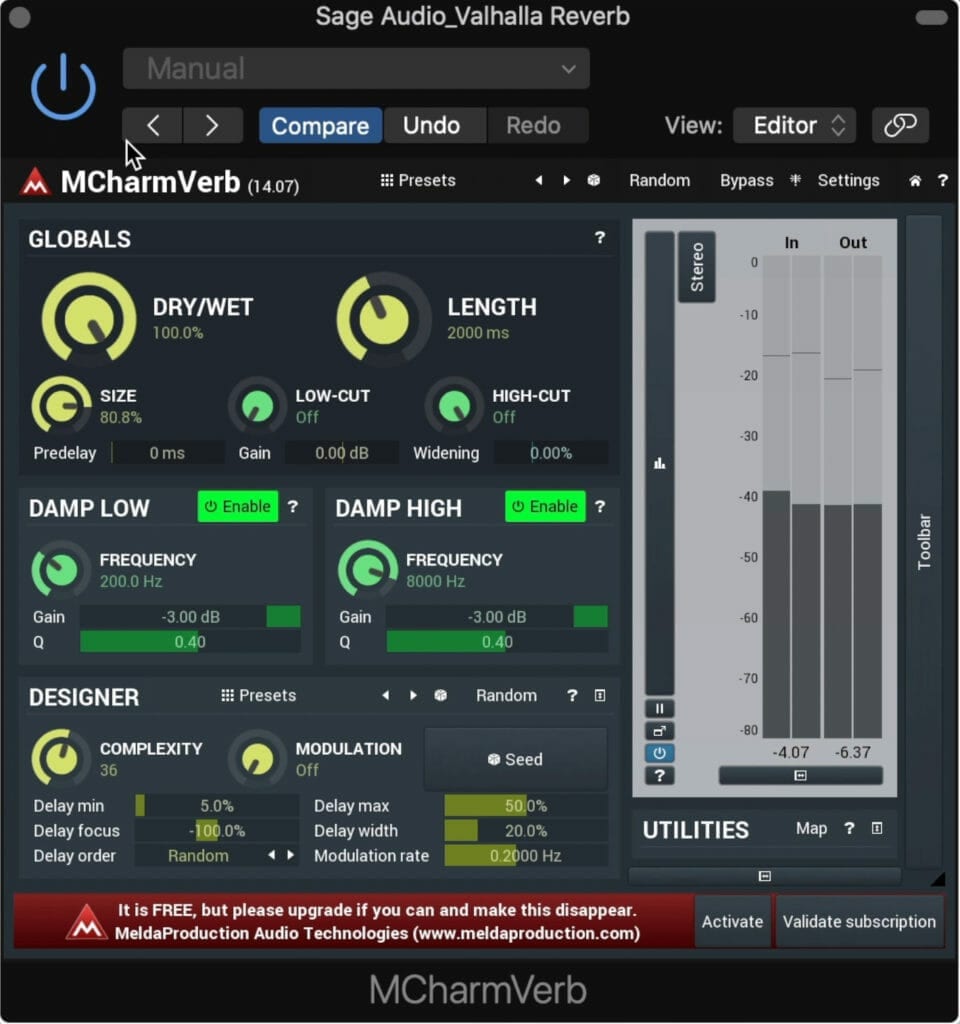The BEST Free Reverb Plugin?
What is the Best Free Reverb Plugin?
Although there is no "Best" reverb plugin, the Valhalla Supermassive is by far one of if not the best FREE reverb plugins that we have used. The functionality is comprehensive and versatile, while the overall sound rivals that of some of the best paid reverb plugins.
The Valhalla Supermassive in Detail
The simplistic layout of the Valhalla SuperMassive is misleading - although it’s aesthetically designed, there nothing to suggest how versatile and impressive this plugin is.

The Valhalla Supermassive may be the best free reverb plugin available.
But after testing this plugin, running through its presets, and comparing to other free reverb plugins, I can say with a good deal of certainty that the Valhalla SuperMassive is the best free reverb plugin currently available.
Let’s delve into the plugin’s functionality and listen to its effect on a vocal, piano, drum, and orchestral track (in the video embedded above). Additionally, let’s consider what makes this plugin special, and discuss some of the technical aspects of the plugin.

We'll compare it with the MCharmVerb, another popular free reverb plugin, to see what the difference is.
First, if you’re an artist engineer, and you’re looking to have your mix professionally mastered, send it to us here:
Get a Free Mastered Sample of Your Music
We’ll master it for you and send you a free sample to review.
The Functionality of Valhalla SuperMassive

The design of the Supermassive is simple, but offers a lot of flexibility.
On the left side of the plugin are the mix and width dials. The mix dial is your wet/dry for the plugin, while Width increases or decreases the stereo width of the reverberation or delay.

The mix is your wet/dry and the width is the stereo width.
Delay is the length of the delay taps that make up the reverb. This is measured in milliseconds and can range from 0ms to 2 seconds. Additionally, the timing can be switched to notes, dotted notes, and triplets.

The delay is your delay time, and warp is the variance amongst delay lengths.
Warp adds some variance to these delays. When set to 0 all of the delays are the same length, but increasing the Warp value increases the timing differences between them. This can be used to add some really interesting effects.

Feed back is how much fo the signal is fed back into the delay, and density is the number of reflections or echos.
Feedback controls how much of the delay is reintroduced to itself, or fed-back. Density controls the perceived number of echoes.

Modulation and depth allow you to vary the frequency of the reverb slightly.
You can also introduce modulation with the modulation and depth dials. The modulation dial controls the rate at which the reverb or delay fluctuates, and the depth controls the amplitude of that fluctuation.
On the right, you have a low and high pass filter, both using a 6dB per octave slope. These affect the signal of the feedback section.

The Mode selection changes the ADSR and other important aspects of the reverb.
Perhaps the most interesting and powerful function is the Mode selection, which allows you to filter through 10 different reverb types.
Change the mode type changes the envelope or the ADSR of the reverb. It also changes the feedback network as well as some other complex behind-the-scenes parameters.
This makes some Modes better suited for certain reverb lengths, or effects types. For example, the Lyra setting has a quick attack and long decay time, as well as a very low density.
It also emphasizes the echos of the signal, making it great for pronounced echos that very slowly and gradually fade out.
What’s cool is that each Mode has its own unique setup like this, so if you explore these you can really create a lot of great sounds.

Presets make understanding the plugin a lot easier.
Additionally, you get a good amount of presets to help you better understand the plugin and how it affects the signal. Some of these are pretty straightforward whereas others are incredibly experimental.
You can easily switch through these presets by clicking the arrows next to the preset section.
If you’re looking for more free reverb plugins, take a look at our list here:
We cover their functionality as well as listen to some examples of each.
What Makes the Valhalla Supermassive the Best Free Reverb Plugin?
In short, the versatility of this plugin helps, but what truly sets it apart is the quality of the reverb. Being an algorithmic reverb, it’s easy for a poorly designed setting to cause an artificial sound or unwanted artifacts; however, this plugin sounds incredible.
The sound is smooth and expansive, and the plugin is capable of creating effects that other plugins simply cannot create.
Furthermore, the plugin is just as great at creating realistic effects as it is making completely outlandish and creative ones.

Let's compare the sound of these 2 plugins.
If you were to compare this to another free reverb plugin, like the MCharmVerb, you may notice some similarities, but the sound and what you can accomplish are completely different.
You’ll notice similar widening settings, as well as low and high pass filters, but you’ll end up with not as exciting or expansive of a sound.
Even when you make the MCharmVerb plugin as CPU intensive as possible by increasing the number of delay taps to 64, it doesn’t achieve the same tonality or complexity as the Valhalla supermassive.
With that in mind, let’s listen to the Valhalla Supermassive, and compare it with the MCharmVerb to have a point of reference.
Valhalla Supermassive on Vocals
When placed on vocals, Supermassive creates an openness that other free plugins don’t. You can also use this plugin for chorusing effects, slap-back delays, and vocal doubling.
When compared to the MCharmVerb, you’ll notice that although this plugin creates an expansive sound, it doesn’t convey the same sense of depth or complexity. Additionally, it doesn't offer more delay or echo-centric options.
Valhalla Supermassive on Piano
Reverb on piano can often sound too subtle to be noticeable, but this isn’t the case with the supermassive. It has an incredible creative sound, one that lends itself to writing just as much as processing.
The MCharmVerb on the other hand is more or less just a reverb. It can create a large sound but doesn’t offer anything unique or creative.

So far, the MCharmVerb doesn't sound nearly as complex and enjoyable as the Supermassive.
Valhalla Supermassive on Drums
Some of the shorter options work really well for drums and add a creative thickness to them. The larger reverbs will help create a classic and expansive sound and are best kept at a lower wet/dry setting.
MCharmVerb sounds great and gives you some options, but nothing special. It’s worth noting that the lack of a feedback dial really holds this plugin back.
Valhalla Supermassive on Orchestra
This reverb sounds incredibly unique on orchestra and has a section dedicated to ensembles. By cycling through these you can create some interesting swelling sounds.
Whereas Supermassive offers a lot of unique options, MCharmVerb again only seems able to accomplish a few sounds. The biggest differences between the two really seem to be the flexibility and overall quality of the sound.
If you want more free plugins, maybe ones for mastering, check out our video and blog post on the topic:
In it, you’ll find a lot of valuable info and some great mastering plugins.
Conclusion
The Valhalla Supermassive is a truly versatile and impressive reverb. The fact that it can be used on so many instruments and sound different each time speaks to how well it was designed.
Whether you’re mixing or producing vocals, drums, piano, synth, or strings, there is a setting in this plugin that can help you both sonically and creatively.

I’d highly recommend trying this plugin for yourself - you can download it directly from Valhalla’s website. They make it incredibly simple.
While you’re there check out the Frequency Echo and Space Modulator. 2 Additional free plugins that can expand your sound even more.
Also, let us know your thoughts about this plugin in the comments section below - do you love it or hate it, and why!
If you’re looking to hear your mix mastered, send it to us here:
We’ll master it for you and send you a free sample to review
Have you tried the Valhalla Supermassive reverb before?




